Completed Projects
2024
SafeWahr
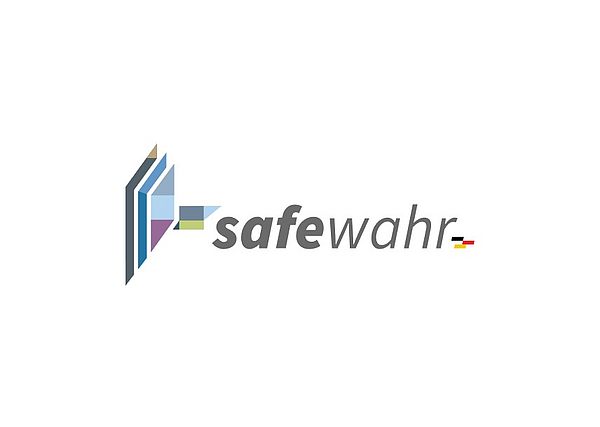
Environmental perception systems of autonomous vehicles are nowdays using extensive AI-based algorithms. Established techniques and methods to proof correctness regarding safety are reaching its limits. Even if a lot of driving scenarios and millions of kilometers are used for testing, an overall safety assurance during design time is not possible. The goal for the project SafeWahr is to duly detect violations of safety critical specifications and uncertainities of AI-based environmental perception systems of autonomous vehicles. In case a violation was detected the autonomous vehicle will then continue its driving task with restricted functionality in a so called fail-operational mode.
One approach for handling situations, which are not known during design time is to partially shift the safety assurance to the operating time. Ultimately, some kind of "operation time certification" is aimed. For this purpose an operation time monitoring architecture for self-diagnosis will be developed in SafeWahr. Within this operation time monitoring architecture three types of monitors will be included: (1) A Situation Monitor, which determines if the current situation was considered during design time, (2) a Validity Monitor, which determines if the AI-based perception is safe regarding its results and (3) a Function Monitor, which determines if the target function acts corretly regarding safety specifications.
Contact person:
E-Mail: Iqra Aslam
LogiSmile
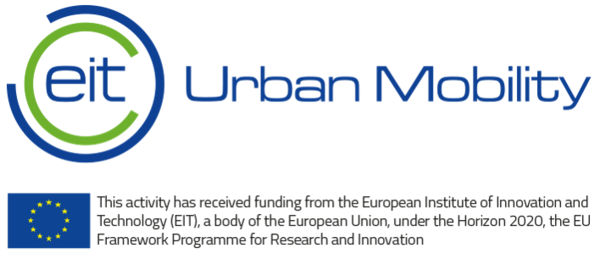

Today’s increasing logistic operations constitute increasing challenges for traffic in urban areas. In addition to traffic congestion caused by logistic operations, safety problems are also getting increasingly critical. Aiming to tackle these challenges, the LogiSmile partners are piloting a fully autonomous delivery system in different pilot cities: Esplugues de Llobregat, Spain, Hamburg in Germany, and Debrecen in Hungary. This autonomous delivery system is realized based on the cooperation between an autonomous hub vehicle (AHV) and smaller robots, which are autonomous last-mile delivery devices (ADD). Furthermore, an additional remote back-end control center for managing the communication between the AHV and the ADD, acquiring the data while operating, and optimizing the fleet operations with efficient routing algorithms. As an NFF member, ISSE participates in the development of the remote back-end control center, aiming to provide fail-operational solutions in the case of critical situations that cannot be handled by the AHV autonomously.
Contact:
E-Mail: Adina Aniculaesei
Methoden zur ODD Beschreibung
Verschiedene Gesetzesinitiativen sehen die Operational Design Domain (ODD) als Ausgangspunkt einer Entwicklung von Automated Driv-Fahrsysteme (ADS). In diesem Zusammenhang wird die ODD von mehreren Automotive OEMs als zentrale Wissensbasis nicht nur für die Systementwicklung und -validierung, sondern auch für sondern auch für die Analyse von Business Cases und für den Systembetrieb. Daher ist es für OEMs eine ODD entwickeln zu können, die in sich konsistent ist, ein zentrales Anliegen. Eine ODD Beschreibung ist in sich konsistent wenn es keine Widersprüche zwischen den ODD Constraints gibt.
Standard-Verifikationswerkzeuge, z.B. Solver für Satisfiability Modulo Theories (SMT), können verwendet werden, um die Konsistenz einer ODD-Beschreibung zu überprüfen Zusätzlich können solche Werkzeuge verwendet werden eine ODD Beschreibung gegenüber konkreten Fahrsituationen zu überprüfen um festzustellen welche Situationen für den Betrieb des ADS sicher sind. Allerdings ist es oft so, dass die Verwendung eines bestimmten Verifikationswerkzeugs umfangreiche Kenntnisse der formalen Spezifikations Sprache, die das jeweilige Werkzeug als Eingabe akzeptiert, erfordert.
Aktuelle Standardisierungsbemühungen, z.B. durch ASAM Arbeitsgruppe, empfehlen die Beschreibung einer ODD durch semi-formale Sprachen, z.B. auf Basis von YAML, um auch Stakeholder anzusprechen die kein Hintergrund in formalen Methoden haben. In diesem Projekt bauen wir ein Konzept für die Beschreibung einer ODD auf, das die Brücke einspannt zwischen den semi-formalen Sprachen, die durch aktuelle Standardisierungsbemühungen empfohlen sind, und der formalen Standardsprache, die für die Interpretation und Auswertung der ODD benötigt wird, einspannt. Dieses Konzept demonstrieren wir anhand von Beispielen aus der Industrie die durch ein Automobilhersteller im Rahmen des Projektes uns zur Verfügung gestellt wurden.
Ansprechpartner:
E-Mail: Adina Aniculaesei
2023
V-Modell XT / Digital Projects App (DiPA)

Weit e. V. has commissioned the Institute for Software and Systems Engineering to provide the V-Modell XT in the form of a public REST interface. After the fundamental revision of the V-Modell XT metamodel, an interface will be offered that is specified with OpenAPI and implemented in Java.
First software developments of Weit e. V. implementing the V-Modell XT REST API are the newly developed Web Assistant (formerly Project Assistant) and the Digital Projects App(https://dipa.online). The revision of this software ecosystem is intended to offer a simple and contemporary entry into project management with V-Modell XT.
In this context, there is research interest in the software life cycle as well as the software architecture with the background that there are already several editions in the form of metamodels and derivations for different user groups of the V-Modell.
Contact:
E-Mail: Dr. Christoph Knieke
V-Modell XT Bund
This project is about improvement and maintenance of V-Modell XT Bund. The V-Modell XT Bund is a company-specific adaptation of the V-Modell XT to the federal authorities. In this project it is developed, maintained and maintained according to V-Modell XT.
Contact:
E-Mail: Dr. Christoph Knieke
DevOpt

Software ecosystems are complex system groups of interacting, distributed individual systems that require continuous, autonomous optimization. In DevOpt we understand an emergent, distributed system as a three layers architecture: Local IoT ecosystems negotiate their work configuration / resource usage under framework conditions. A control layer can correct local decisions through comprehensive, distributed optimization. A DevOps layer enables analysis, maintenance and further development through human intervention.
DevOpt aims at the development of controlled emergent systems through distributed modelling, local negotiation of device configurations / resource usage, increased development efficiency through model-based design, as well as combination of emergence and DevOps. The demonstration / evaluation takes place as electric grid scenarios using self-learning predictive SmartMeters. The ISSE will implement a component-based emergence framework for the local layer and environments, which enables local optimization and mutual dynamic use of resources. Furthermore, the emergent integration should be monitored and optimized with regard to functional and non-functional requirements.
Contact:
E-Mail: Mohamed Toufik Ailane
E-Mail: Mohammad Abboush
KIKI
Der Einsatz von KI im Kontext der prädiktiven Instandhaltung von Abwasserkanälen birgt Vorteile, sowohl im Sinne der Kostenersparnis als auch der Vorbeugung von Totalausfällen und daraus ggf. resultierenden Verunreinigungen des Grundwassers. Ziel ist es hierbei, bisher analog ausgeführte Tätigkeiten, so beispielsweise die Klassifikation von Schäden am Kanal, in Zukunft automatisiert erfolgen zu lassen. Darauf aufbauend lässt sich insbesondere eine Strategie ableiten, mit der sich der zukünftige Instandhaltungsprozess optimieren lässt. Zum Zwecke der Nutzerfreundlichkeit wird zusätzlich ein 3D-Modell des gesamten Netzes entwickelt, mit der sich sowohl die Klassifikation, als auch die Prognose des Zustandes visuell einsehen lässt. Die geplanten Schritte hierbei reichen von der theoretischen Erarbeitung eines Konzepts, bis hin zu einem einsatzfähigen Prototypen. Die eingesetzten Techniken umfassen klassische statistische Methoden, bis hin zu maschinellen Verfahren im Sinne des Predictive Maintenance und der Klassifikation.
Ansprechpartner: Benjamin Acar
Digital Innovation Hub "Reallabor DCE"
The increasing tightening of global ecological conditions is pushing more and more for the development of new, green technologies and concepts. The infrastructure platform of the Digitized Circular Economy (DCE) reallab aims to establish innovations and models in the field of sustainable, digital technologies with its partners.
In doing so, the newly conceived model of the Circular Economy is at the center of the research orientation. The various sub-areas of the circular model form the building blocks of the real laboratory. In various sub-projects, it researches the application-oriented solution development of these sub-aspects and thus creates mechanisms for the implementation of the Circular Economy.
Furthermore, the networking of the various actors and the strengthening of their knowledge with regard to digitalization and sustainability is of outstanding importance. This is also made possible in the context of the creation of new business models, as well as the further training of the actors in future technologies. The goal is to create new synergy effects in joint projects and to develop best practice approaches that can be tested in the long term.
The guiding idea in the course of the Reallabor is the transformation of existing economic and production concepts towards the Circular Economy. We have set ourselves the goal of using the tools of digitalization to redefine product life cycles and establish alternative usage concepts in order to reduce the constant burden on the environment caused by the increasing consumption of short-lived products.
All further information about the project can be found on the Pages of the reallab DCE...
PROJECT PACKAGE:You can find the project poster Here as PDF.
Contact person:
E-mail: Dominique Fabio Briechle
LifeCycling²
In the LifeCycling² project, reconfigurable design concepts and services for the resource-efficient (continued) use of e-cargobikes are being developed. In our subproject, we are researching modular, adaptable software solutions for the use of software components in first and second use, including function updates. The first step is the development of reconfigurable software architectures and control units for the efficient modification of software functions (upgrades, function changes) as well as the development of accompanying services for resource-efficient use. Based on the defined requirements, necessary information services for private and commercial use of e-cargobikes are further defined. The Institute for Systems and Software Engineering (ISSE) is also developing a software solution for objective assessment of technical and economic value, e.g. based on charging cycles and residual capacity.
PROJECT PARTNERS: TU Braunschweig (Institute for Design Engineering, Institute for Social Sciences), baron mobility service GmbH, TU Clausthal (Institute for Software and Systems Engineering), Electrocycling GmbH, Sense4Future GmbH, Stöbich technology GmbH
PROJECT PLATE: You can find the project poster here as PDF.
PROJECTVIDEO: You can find the project video here: https://video.tu-clausthal.de/film/1322.html
Contact:
E-Mail: Marit Mathiszig
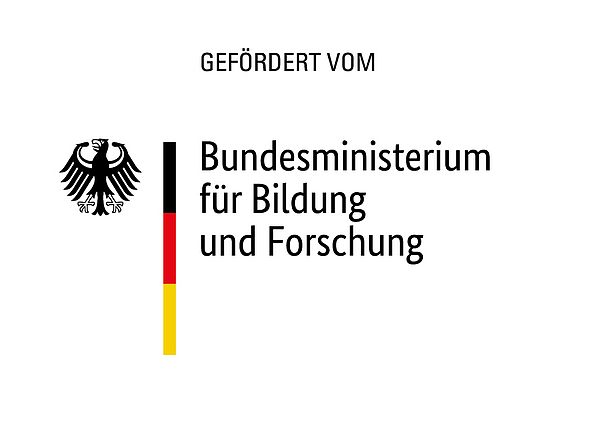
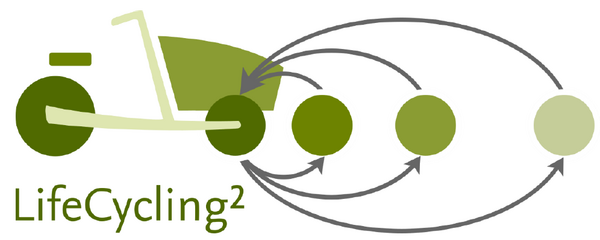
mobil-e-Hub
The mobil-e-Hub project aims to meet the challenges of increasing logistics traffic on the last mile to the customer, especially due to e-commerce. The technological focus and central project innovation of mobil-e-Hub is a new logistics system that can tie drones with transport boxes via carrier systems to (electric) vehicles - the mobile e-hubs - for passenger mobility, e.g. public transport buses. The drones themselves autonomously pick up the boxes optimized for food transport at automated picking stations, touch down on the vehicles equipped for this purpose and take off directly at the delivery point to autonomously hand over the box to the customer.
There are legal and technological challenges in drone operation as a delivery service. ISSE is addressing the technological challenges. To enable reliable, robust and safe operation of the delivery drone system, an online monitoring system for the drones is being developed and implemented. For this purpose, the dependability cage approach developed at ISSE for runtime monitoring of functional requirements of autonomous vehicles is adapted to flight systems. In addition, for optimal control planning of an e-mobility system, energy management is crucial, therefore artificial intelligence methods are used to predict the energy demand. Challenging is the coupled energy management between the electric carrier vehicle and the delivery drone considering the logistics system requirements (e.g., time), the path information, the current local conditions (e.g., temperature), and the previous observations. The information from the energy management can be linked to the online monitoring system to ensure that sufficient energy is available to reach the target and make a planned landing.
Contact: E-Mail: Adina Aniculaesei
MushR

Project-Website (incl. Live Stream): Link
The MushR project aims to close the gap between the usage of digital tools and modular, adaptable micro-farming and agricultural systems. It introduces four innovative novelties extending the state of the art of gourmet mushroom production, facilitating process automation, more sustainable mushroom provision, increased yield and improved quality of harvested mushrooms. The project proposes a modular and scalable gourmet mushroom growing and harvesting system using an image recognition setup that detects when and which mushrooms are ready to be harvested in combination with an automated mushroom harvesting mechanism for harvesting the mushrooms.
The mushrooms are grown in a sensor-array controlled growing chamber similar to traditional industrial mushroom farms. However, instead of using non-reusable plastic bags, the mushrooms are grown in reusable mushroom pods, which are linked to a digital twin. The growth status and the health of the mushrooms are regularly checked via cameras. The camera input is processed by a YOLO model to detect whether the mushrooms are ready to be harvested or not. The later integrated automated harvesting system will then be activated towards carrying out its task. Finally, the mushrooms are ready for consumption, and the mushroom pods remain in the growing chamber.
Contact:
Prof. Dr. Benjamin Leiding benjamin.leiding@tu-clausthal.de
2022
Sensorentwicklung für Produkte des baulichen Brandschutzes zur Sicherstellung deren Funktion, für Smart Maintenance und I 4.0
Elements of safety-relevant solutions, such as fire doors, differ very significantly from machines in industrial plants in terms of their costs and connection to the energy supply, a variety of challenges need to be tackeld to turn safety-relevant systems into Cyber Physical Systems. The project deals with the necessary developments. These range from the design of specific sensors and actuators, which can also be produced cost-effectively in small quantities, to IT solutions for condition monitoring and automated functional testing of safety-relevant systems, and the establishment of methodological competencies for the development process of such Cyber Physical Systems.
Contact: Stefan Wittek
AI-based flood warning system for the city of Goslar
The project "AI-based flood warning system" is a practical application of AI forecasting systems to safety-critical areas. The application domain is the catchment area of Goslar with the existing sensor infrastructure and its historical data. The task of the artificial intelligence is to observe the current status of weather such as precipitation, soil moisture, solar radiation over a past period of time and put it in relation to the current water level in the settlement. A possible correlation is assumed, so that dangerous, sudden peaks can be predicted at an early stage. The forecasting method is thus a core element for the coordination of a series of structural measures for the prevention of sudden flooding events.
Contact: Dimitri Bratzel,Stefan Wittek
AKI - Repository research
AKI is a collaborative project, between the Institute of Software and System Engineering, Öko-Institut e.V. and the Federal Office for the Safety of Nuclear Waste Disposal. The Achivement of the Project is to research the use and application of artificial intelligence, i.e., AI, in the selection process in the field of repository research. Foremost, the structuring and evaluation criteria of the possible applications of the AI are to be carried out. This evaluation shall be considered concerning scenarios or geoscientific questions. The result should be a transparent and explainable comparison, classification and evaluation of the possibility to apply and usefulness of machine learning methods in the field of geosciences. Thereby, research gaps in the geosciences shall be identified, and R&D needs shall be named. The essential use of AI will be made in interacting with a so-called expert system. One essential transparency criterion is that artificial intelligence will take over particularly time-consuming and repetitive tasks, but the human decision-maker should make the final decision in the so-called expert system.
Contact: Dimitri Bratzel
Timing Analysis and Steering Development
The project "Timing Analysis and Steering Development" researches methods for estimating and safeguarding runtime behavior in embedded control systems with hard real-time requirements. This is done in the context of actual development projects. The focus is on the specification, modeling and measurement of runtime behavior at system level.
Contact:
E-Mail: Mohammad Abboush
E-Mail: Dr. Christoph Knieke
Harz water reservoir
In the north of Germany, the Harz, with its annual precipitation of 1200 mm on the Clausthal plateau and its storage capacity, through the numerous tailings ponds and dams, supplies regions as far away as Bremen with drinking water. Due to this importance in drinking water supply, but also due to the existing underground infrastructure of the mining heritage and due to its central and cross-border location, the Harz region is of outstanding water management importance in Germany. AI-supported water management can help to mitigate the extreme weather events that occur due to climate change, such as heavy rainfall events with flood disasters or long periods of drought. Possible solutions should both show the user options for action and make the use of conventional, numerical models more efficient and effective. The Harz region is to be developed as a digital twin and serve as a basis for the application of complex simulations over a wide area. The focus of the modelling is on an AI-hybrid model that combines both conventional and innovative approaches and thus generates added value in terms of water quality and quantity.
Contact: Benjamin Acar
Matures Ölfeld

Der Einsatz von KI soll dazu dienen, die spezifischen Kosten der Ölförderung zu senken, ohne Kompromisse in der Sicherheit, des Umweltschutzes oder der Integrität einzugehen. Die Studie soll vor diesem Hintergrund aufzeigen, welche Einsatzbereiche für KI in einem maturen Ölfeld bestehen und wie diese wirtschaftlich zu bewerten sind. Die Einsatzmöglichkeiten zur Mehrwertbestimmung künstlicher Intelligenz im maturen Ölfeld sollen in einer Literaturstudie durchgeführt werden. Betrachtungsgegenstand ist hierbei der abgegrenzte Bereich von der Sonde selbst (inkl. Pumpe) bis zur Übergabestation inkl. Pipelinesystem. Hierbei werden die Einsatzmöglichkeiten und Potentiale von KI-Techniken aus den Bereichen Knowledge Discovery in Databases, Predictive Maintenance, Zeitreihenprognose, Modellbildung, modellbasierten und modellfreien Optimalsteuerungen und -regelungen untersucht und beschrieben.
Ansprechpartner: Stefan Wittek
Biotope
The aim of the project BioTope is to develop a basic technology and engineered methodology to facilitate the creation of emergent services that allow for self-adaptive system platforms. The rules of composition are not centrally and statically predetermined by the
Platform, but can be dynamically configured and demand-driven. This should be achieved and maintained in an Open IoT ecosystem that Integrates data and services to create processes to satisfy user requirements. The main motivation here is user requirements, which drives any new behaviour created in the system. The ecosystem tends to create the balance between user needs and provided data and services. All this is governed by system guarantees that ensures the correct flow of the ecosystem.
Contact:
E-Mail: Eric Douglas Nyakam Chiadjeu
E-Mail: Christian Schindler
Effizient Nutzen
New production of electrical and electronic products in low-wage countries is currently often cheaper than repair, refurbishing and remanufacturing processes in high-wage locations such as Germany. Ever shorter innovation cycles are also generating new customer needs. Despite the desire of many people to have the option of buying used equipment or repair solutions for products for which there is no longer a warranty/guarantee, repair or refurbishing is generally not considered even for high-value electrical (electronic) products, or is simply not possible for the layperson even under instruction, e.g. in repair cafés. This is due in particular to the fact that repair or refurbishment is becoming increasingly difficult because, in addition to the complex electronic hardware, software availability and security as well as networking know-how play a decisive role. As a result, end-of-life products are replaced by new products after a limited period of use and, at best, recycled for materials/energy.
The scale of this global issue reached a new high of 44.7 million tons of electronic waste in 2016. This results in considerable environmental impacts and resource losses, which could be avoided by a closed-loop recycling based on optimized cascade use and extended use as well as their targeted recycling in the end-of-life as envisaged in the project. The project EffizientNutzen therefore aims to significantly increase the lifetime and, in particular, the useful life of these products. In further subprojects, digitalization strategies are to be developed to close the information gaps.
PROJECT PARTNERS: The Institute of Automotive Economics and Industrial Production (AIP), Research for Sustainable Development (FONA), IWF, ReziProk, TU Braunschweig
PROJECT PLATE: You can find the project poster here as PDF.
Contact:
E-Mail: Dominique Briechle


autoMoVe
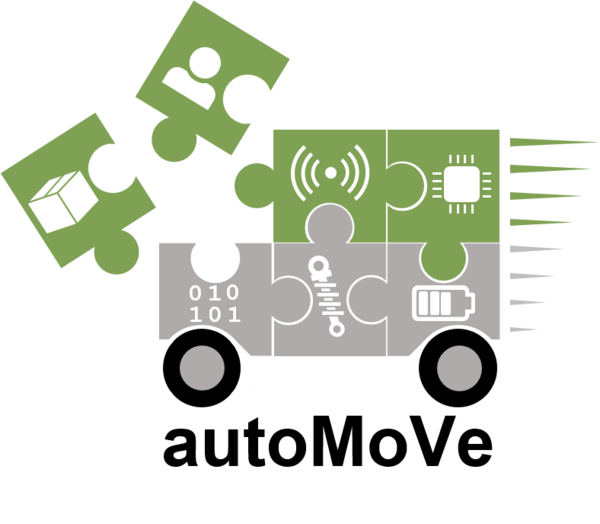
The autoMoVe project focuses on highly modular vehicle concepts based on a universally usable basic vehicle module with interchangeable vehicle superstructures, e.g. for passenger or goods transport. Taking into account the requirements of the selected application scenarios, the vehicle concepts are developed with a focus on vehicle design, vehicle functions, energy management and control as well as software architectures.
Furthermore, a development and simulation platform will be implemented to support the virtual development work. Here the functions of the developed vehicle concepts are demonstrated. In addition, individual innovative subsystems are physically implemented and tested.
2021
ARBAY
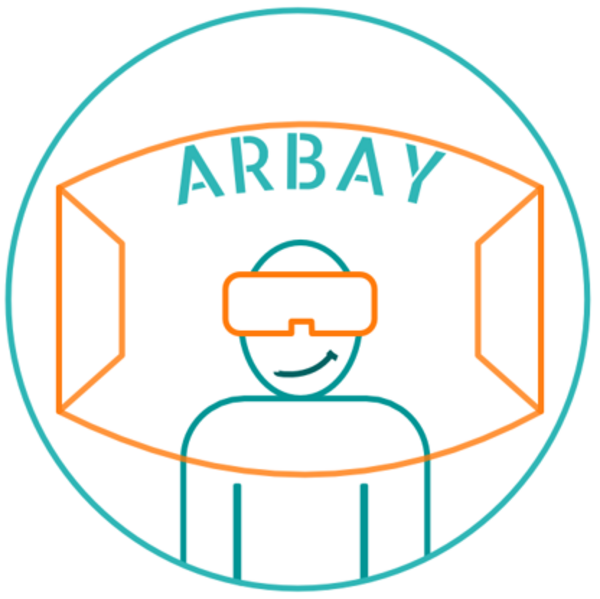
Internet marketplaces such as Amazon or eBay are dominating more and more areas of the retail trade as "digital checkpoints". One exception so far has been the trade with durable, highly varied and customizable consumer goods. The effect of the configurable product on the consumer's own four walls can only be checked after delivery. The ARBAY project brings the consultation and configuration of individualized goods into the living room. Virtual and augmented reality technologies are used in the project to create new digital distribution channels for highly varied goods. The aim is to develop a sales platform that extends the principle of known sales platforms for the sale of these goods. The main focus of the ISSE project is the development of a semantic product model as a basis for the platform.
Contact:
E-Mail: Dr. Christoph Knieke
Recycling 4.0

The aim of the project Recycling 4.0 is to improve the recycling process through a targeted and controlled exchange of information. All players, from raw material producers to OEMs and recyclers, are to be networked with each other and form a circular economy. The focus of our subproject is on the development of an information and data marketplace where the different actors can network to exchange information.
The project video "Digitization as the key to the Advanced Circular Economy".
Due to the advancing expansion of electromobility, more and more lithium-ion batteries are being sold. The scarce raw materials they contain, such as lithium and cobalt, make efficient recycling essential. This presents manufacturers and recyclers with new challenges in terms of technology and available information. The ERDF innovation alliance "Recycling 4.0" is looking at possible applications of digitalization in recycling to meet the challenges posed by increasingly complex products and a lack of information. The focus is on the extraction, dissemination and use of information through Industry 4.0 along the entire value chain. To this end, information dissemination will be enabled via an information marketplace as well as direct sharing between actors. The additional information will be used to increase efficiency in recycling, close material cycles, recover critical raw materials and enable decision support. The project thus contributes to sustainable e-mobility, enables resource conservation and reduces Germany's dependence on raw materials.
Click here for the project video:https://video.tu-clausthal.de/film/recycling-4-0_1170.html
Contact:
E-Mail: Marit Mathiszig
Safeguarding the development of steering systems
The overall objective of this project is to investigate what a good and effective model-based validation process based on the SCADE tool chain looks like. From this a concrete goal has been derived: requirement based test cases for a vehicle function shall be generated automatically. SCADE Software Architekt will be used for modelling the vehicle function and the Model Checker SCADE Design Verifier will be used for automated test case generation.
The project is carried out in cooperation with VW Braunschweig in order to emphasize the added value of formal methods for our industrial partner and to increase the acceptance of formal methods in industry as part of a more comprehensive experiment.
Contact:
E-Mail: Adina Aniculaesei
VanAssist
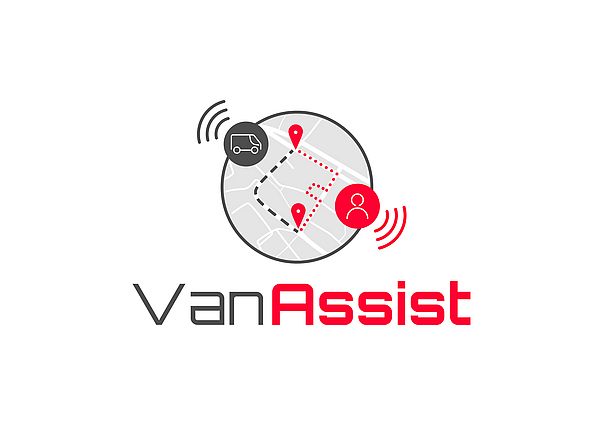
The main goal of this project is to develop an integrated vehicle and system technology that enables a largely emission-free and automated delivery of goods in urban centers. To this end, autonomous and remote-controlled driving on company grounds and in urban environments, as well as intelligent assistance for parcel delivery by autonomous driving functions of e-transporters, will be implemented.
Automated Testcase Generation 2.0
The overall goal of this project is to further develop the test case generation system already integrated with the SCADE development environment and thus significantly increase the test case coverage achieved so far. Automated techniques will be complemented by manual methods to design better test cases with regard to requirement coverage and source code coverage. A monitoring function provided by our industrial partner VW to ensure the conversion of current into power in electric vehicles serves as a practical example here. In this project, natural language requirements are converted into the formal language STIMULUS in the context of the software and systems life cycle. The SCADE Software Architect is used as a tool for modeling the vehicle function, while the automated test case generation is performed with the Model Checker nuXmv.
The project is carried out in cooperation with VW Braunschweig.
Contact:
E-Mail: Adina Aniculaesei
Absicherung Abgasnachbehandlung
In den Verbrennungsprozess von Dieselmotoren gehen multiple Massenströme ein und aus. Zur Verbrennung im Motor werden im wesentlichen Kraftstoff und Luft benötigt. Um die Effizienz der Verbrennung optimal zu halten, muss ein optimales Verhältnis zwischen Kraftstoff und Luft eingehalten werden. Die Regelung des Luftmassenstroms wird durch eine Regelklappe (Aktuator) realisiert. Zur Messung des Luftmassenstroms existiert ein pulsationskorrigierter Heißfilmluftmassenmesser (HFM). Die Messgenauigkeit des Sensors zur Luftmassenstrombestimmung wird zusätzlich über Referenzkennfelder und dynamische Lernkennfelder optimiert. Nachdem der Motor den Diesel verbrannt hat, entsteht ein Abgasmassenstrom. Die Aufgabe der Abgasnachbehandlung ist ein Teil des Abgasmassenstroms über den Luftmassenstrom zurück in den Verbrennungsprozess zu führen. Dadurch wird eine Reduktion der Schadstoffen erzielt, welche aus dem Verbrennungsprozess hervorgehen, sodass die Umweltbelastung möglichst klein gehalten werden kann.
MaMMa

The project is located in the mining domain and brings together innovative solutions from the field of digitisation and automation with proven mining concepts. The availability, efficiency and safety of the machines and mine equipment will be improved by an intelligent, integrated and holistic maintenance system. New existing IoT methods link the already installed controls and measuring systems to a common platform. In this way, new components can be connected to the system step by step or older ones can be disconnected in a similar way. This project focuses on the semantic integration of different data sources, from sensors to complete machines.
KISEL
Due to the high development dynamics in electromobility, simulation tools are required in order to be able to select the most energy-efficient and economical configuration from the multitude of possible system concepts and operating strategies on an interdisciplinary and cross-departmental basis. However, since the tool landscape used in the automotive industry is very heterogeneous, it is hardly possible to carry out the required number of total vehicle simulations with reasonable effort. This is due to the lack of interoperability of the individual simulators, which generally do not allow standardized access to the libraries of the component and system models of other simulators. This is where the KISEL project steps in. The aim of the project is to develop a novel, interdisciplinary catalogue platform for component and system models based on international standards that guarantees such interoperability. This is made possible by standardized access to the model libraries of different simulators. The effectiveness of the platform will be tested by means of demonstrators for electric vehicles of the compact class and for battery-powered electric buses.
SYNUS
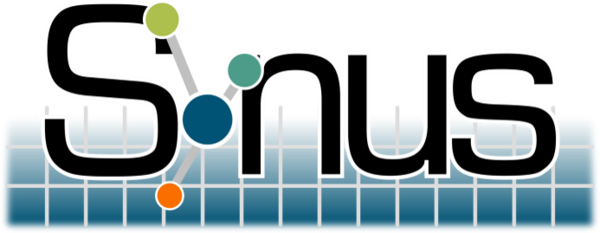
The digitization of value chains can result in considerable productivity increases and economic potentials for Germany as an industrial location across all industries. The basis of all I4.0 solutions is the collection, processing and provision of information for the real-time networking of people and products. The distribution, analysis and target-oriented use of information results in diverse potentials for improved planning and control of processes and products along the entire value chain. However, companies are reluctant to digitize their own business processes. This is due to a lack of knowledge, difficulties in forecasting an introduction, high investment costs and unknown follow-up costs. The objective is therefore to map the information, material and energy flows changed by I4.0 solutions within companies across divisions. In order to achieve the outlined objectives, new methods, modelling and simulation tools for the integrated conception and evaluation of potentials as well as obstacles of I4.0 solutions are researched, prototypically elaborated and exemplarily applied.
Model Based Function Specification
Software development in the area of embedded systems has been model-based for quite some time. This reduces development costs and minimizes the number of electronic errors with the help of more intensive early tests. In individual cases, cost and time savings of up to 50 percent are achieved with significant improvements in product quality. As part of a reference project at Siemens Mobility GmbH, a consistent modeling approach including the necessary process steps for model creation and information acquisition and validation is being developed. The aim is to evaluate the basic potentials of the model-based function specification, taking into account the organizational, methodological and technical constraints of Siemens Mobility GmbH.
Other project participants are the Institute for Construction Technology at the TU Braunschweig and the Institute of Mechanical Engineering at the TU Clausthal.
SmartHybrid

In the SmartHybrid innovation network, six Lower Saxony research institutions from different scientific disciplines are researching new digital services and innovative business models for the future of Lower Saxony companies. Digital technologies such as the Internet of Things, cyber-physical systems, Virtual & Augmented Reality or 3D printing, which can be integrated into your business processes to develop new digital services for many product types, are of central importance for research. With this bundling of services in the sense of "hybrid value creation" (also known as product service systems), the Innovation Network is focusing on a topic that is being discussed more and more in the context of digitization and which many experts consider to be of greater economic importance for small and medium-sized enterprises than "Industry 4.0".
Verification of Exhaust Aftertreatment Systems
Reactive systems are of particular interest for systems engineering because they have large, non-linear state spaces. In addition, they can, at least theoretically, have infinite runtimes. There are a number of methods for checking correctness, especially for testing, simulation and formal verification.
The overall goal of this project is to apply formal verification methods to validate complex nonlinear reactive systems.The vehicle function of the exhaust aftertreatment is used in this project as a practical application case. Specifically, the concrete task is to verify its correctness with respect to predefined, expert-based requirements under consideration of error models (e.g. sensor measurement tolerances).
The project is carried out in cooperation with VW Wolfsburg.
Accurate speed determination
The car manufacturer Volkswagen has had an algorithm developed which determines the vehicle speed under the conditions of the Euro-NCAP requirements instead of on the basis of current national legal requirements. Within the project "Accurate Speed Determination" the correctness of the developed algorithm shall be checked by formal methods against the legal and NCAP requirements.
SWZ Multi-level Simulation
The development of cyber-physical systems requires the application of holistic simulations. In order to do justice to the complexity of these systems, we are striving for an efficient simulation methodology in the Multi-Level Simulation project. The required holistic perspective is achieved at the rough level, which is co-simulated with several models at the detail level to focus parts of the system that are of particular interest. Which parts are "zoomed in" is dynamic during a simulation run. This dynamic is taken into account on the computing infrastructure level by rolling out the resulting multi-level simulation in a cloud environment with dynamically allocated resources and thus avoiding wastage of resources.
Intelligent control systems
The project "Intelligent Control Systems" deals with the application of deep learning methods to control systems. The long-term goal is the evaluation of concepts for intelligent, AI-based controllers in the automotive sector. As a first step, data-based models for hidden system states will be investigated. Different subsystems of the engine are considered as application examples.
Model-based requirements management for embedded automotive systems
The tasks of requirements management include gathering and documenting requirements. In the automotive sector, it is common practice for system requirements to be documented in specifications at component level only. In order to ensure their traceability and consistency, requirements from the component level are assigned to requirements from the customer level. This step is very time-consuming and error-prone, as many component requirements have to be assigned manually. The model-based development approach enables the tool-supported derivation of artifacts from different abstraction levels. The goal is therefore to develop a hierarchical modeling concept and a tool so that the structuring and derivation of requirements with modeling tools is possible across specifications.
Modular thermal management
Thermal management is a vehicle function from control engineering. Part of the function is implemented with software components so that they can be reused for different vehicle models. The software components have a large number of application parameters so that the interfaces and the behavior of the software can be configured to suit the vehicle model. The application parameters are set with DCM-XML-based tools, so that the setting must fulfill the interaction of the software components. For this purpose, the application developer manually checks the descriptions for consistency, which causes high effort. The goal is to develop an integrated modeling concept and a tool for automated consistency checking in order to reduce the effort required for the application step.
Automotive Operating System
Currently under construction
Mit der zunehmenden Automatisierung der Fahrfunktionen und dem Ziel des vollständigen autonomen Fahrens werden die Anforderungen an Hard- und Software in Fahrzeugen stetig größer. In diesem Projekt wird deswegen ein Automotive OS und Komponentenmodell aufgebaut, welches von Hardware, Betriebssystem und Kommunikationsmiddleware abstrahiert. Das Komponentenmodell ermöglicht insbesondere, dass Komponenten bei Fehlern Resilienz zeigen, indem sie durch das OS im Gesamtsystem migriert, redundant vorgehalten und geupdatet werden können.
Generative manufacturing in construction engineering
This former NTH project consisted of a total of six institutes from the Universities of Braunschweig, Clausthal and Hannover, which have joined together on the topic of digital construction. The group pursued transdisciplinary approaches using technology funded by the DFG.
The focus of the three-year project is the development of a formless production of complex concrete components using robotic spray technology. The research project focuses on all process-relevant parameters for robot-assisted, additive fabrication of complex concrete components by means of concrete spraying. In the process, both aspects of material-appropriate processing, possible structural shaping and auto-adaptive processes in the automated production process are examined.
The goals of the project are the development of a mixed-reality simulation framework based approach and the implementation of a database for project-related documentation.
An impression of the results obtained in the project can be found here.
BIG IoT
BIG IoT - Bridging the Interoperability Gap of the Internet of Things
Projectwebsite
The goal of the BIG IoT project is to remove technological market entry barriers of service and application providers of the Internet of Things by exploiting the capabilities of smartobject platforms through establishing syntactic and semantic interoperability. With the technology, concepts and semantic standards, provided by BIG IoT, the basis is created to enable the second use of already existing data and establish the interoperability between the domains.
The key elements are: to provide a platform that enables the data consumer to easily discover and access data in a uniform manner using semantic descriptions.
- Standardized ways to access data from different sources in a secure way.
- Bridging the Interoperability gap between silos by a common semantic vocabulary (Aggregating data from different sources by canonical data models).
- Enabling automated intelligent devices that automatically integrate new data sources.
- Without losing control of the data. The data will always stay at the provider. And enabling the marketplace to easily scale.
The BIG IoT API offers the following core functionalities:
- Identity management to enable users (developers, administrators) to self-register their organizations and create provider and consumer instances along with the necessary IDs and credentials.
- Registration of resource offerings, to allow providers to offer and advertise their assets on the marketplace.
- Discovery of resources according to consumer-defined search criteria (i.e. queries) at run-time.
- Access to offered resources on a provider instance by means of request/response or streaming protocols.
- Vocabulary management for semantic descriptions of offerings, queries, input/output data, etc.
- Security management including authentication, authorization, and key management.
- Accounting of access to resources, which allows the monetization of assets through charging and billing.
iServeU
Transport robots, which not only act autonomously, but above all cooperatively in the human environment, must be able to identify a user, follow him or guide him. The fields of application of such transport robots are broadly diversified: from transport tasks in hotels, airports and railway stations to transport support during shopping.
In the iserveU project transport tasks in hospitals were regarded as central application scenarios. Due to its accessibility, the hospital environment represents a comparatively robot-friendly environment. However, this environment is highly dynamic, heterogeneous and characterized by many unpredictable situations. This promoted the project goal to develop a general solution approach for service robots in the human environment, which is transferable to many other application areas.
RASII - System for automatic vehicle and force information acquisition for authorities and organizations with security and rescue duties
Together with our partners Sinosys, DHM embeddes systems, the Institut für Elektrische Informationstechnik and the Wolfsburg fire department, we developed a system for the automatic acquisition of vehicle and force information for authorities and relief organizations.
KoMo
From Sketch to Model: Cooperative Modeling with Domain-Specific Languages (DSLs)
In KoMo, an automated and bidirectional translation mechanism was created from whiteboard sketches to digitally processable models and vice versa. Furthermore, the creative collaborative development work was supported by a model data management system that is able to correctly integrate parallel versions. By minimizing manual synchronization efforts, disruptive interruptions in the creative work phases were largely avoided. In addition, the automation of previously time-consuming and error-prone tasks has significantly increased work efficiency and improved the quality of the work results.
Benefit and impact controlling
The IT investment programme was launched at the beginning of 2009 with the resolution of the German Bundestag on the "Gesetz zur Sicherung von Beschäftigung und Stabilität in Deutschland" ("Act to Safeguard Employment and Stability in Germany"). This means that a total of 500 million euros are available for investments in information and communication technology (ICT).
The IT investment programme aims to make the federal administration safer, more environmentally friendly and closer to its citizens and to sustainably strengthen the German ICT industry.
It focuses on four areas of action
- IT security
- Improvement of the federal IT organisation
- Green-IT
- Sustainability/Innovations
In the NuWi project, interviews were conducted with selected measures at regular intervals in order to be able to make a statement about the target fulfilment of the IT investment programme on the basis of the key data collected there.
For this purpose, a report is prepared after each interview phase, which determines the degree of target fulfillment.
CoBePro Pilot - Controlling, reporting and forecasting system - Piloting
The IT investment programme was launched at the beginning of 2009 with the resolution of the German Bundestag on the "Gesetz zur Sicherung von Beschäftigung und Stabilität in Deutschland" ("Act to Safeguard Employment and Stability in Germany"). This means that a total of 500 million euros are available for investments in information and communication technology (ICT).
The IT investment programme aims to make the federal administration safer, more environmentally friendly and closer to its citizens and to sustainably strengthen the German ICT industry.
It focuses on four areas of action
- IT security
- Improvement of the federal IT organisation
- Green-IT
- Sustainability/Innovations
Central programme management is carried out by the IT Investment Programme Project Group (PG Invest) at the Federal Ministry of the Interior.
The goal of this project is the identification of relevant key figures to measure the success of the objectives of the IT investment program. The key figures are to be collected by questionnaires and interviews for selected measures. The results of the interviews will be presented in a summary report. This project is a pilot project to show and adapt the feasibility of the concept. The findings from this project will flow into further rounds of interviews in a continuing project (NuWi).
NTH IT-Ecosystems Projects
IT Ecosystems - DemSy
The cross-sectional working topic DemSy is the application project of the NTH School for IT Ecosystems. Here, an integrated, joint demonstration scenario is developed and conceived. This is the basis for the common demonstrator, whose components are developed in dedicated work packages of the individual research projects and integrated into a demonstrator in the cross-sectional working topic DemSy. Thus, DemSy functions act as a bracket for the participating research projects. The research projects can derive their questions from the common demonstration scenarios, which represent solution approaches in the context of the application vision and implement these in an integrated common demonstrator for the demonstration and evaluation of the work results in the context of the application vision. DemSy provides a platform for the joint presentation of the project results.
IT Ecosystems - GuMIT
The cross-sectional working topic GuMIT is of particular importance. In GuMIT, a fundamental, formally sound understanding is first developed across all cooperation projects. On the basis of this precise definition of an IT ecosystem, the isolated solution approaches of the three research projects can be discussed and integrated into a comprehensive, formally sound and fundamental approach for the methodical development, provision, operation and evolution of IT ecosystems.
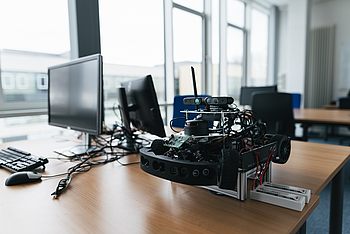
Für Informationen über abgeschlossene Projekte wenden Sie sich bitte an info@isse.tu-clausthal.de
